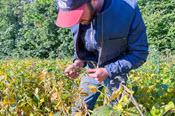
Prepare to control these seven yield-limiting adversaries
Compiled by the Better Farming Editorial Team
Looking ahead to next growing season, you can be sure these uninvited guests will return, to compete with crops, steal essential nutrients, water and sunlight, and hinder profitability. This article looks at seven notorious annual weeds, diving into their characteristics, the threats they pose, and the best strategies to combat them for 2024.
#1. Lamb’s quarters (Chenopodium album)
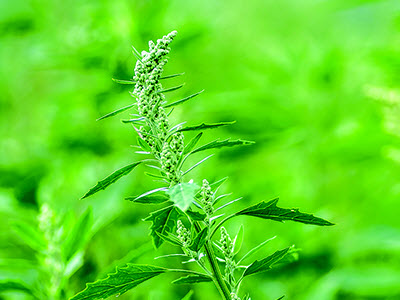
Characteristics: Recognizable by its diamond-shaped leaves and powdery texture, this weed grows rapidly, sometimes towering up to five feet.
Impact: Historical data paints a concerning picture of its competitive nature with crops, especially corn and soybeans. If unchecked, Lamb’s quarters can overshadow crops, stealing light and nutrients. Also, as Better Farming Crops columnist Patrick Lynch explains, “it was the first wide-spread weed that was resistant to triazines, including atrazine and metribuzin.”
Control Measures: An integrated approach is indispensable. Herbicides like metolachlor and atrazine can be effective if your Lambs’ quarters is not triazine resistant.
Unfortunately, in Ontario, most escapes are triazine-resistant. Additionally, crop rotation and ensuring herbicides penetrate the thick canopy of this weed can make a significant difference. This is especially the case if using glyphosate. “You must spray early at full rate,” suggests Lynch.
#2. Pigweed (Amaranthus spp.)
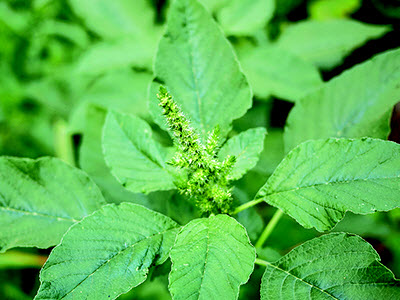
Characteristics: With a rapid growth rate and a tall, slender appearance, pigweed varieties, especially the Palmer amaranth, are resilient adversaries.
Impact: A single plant can produce up to half a million seeds, leading to quick infestation. Its aggressive nature can impact soybean yields significantly.
Control Measures: Diversifying herbicide usage helps counteract potential resistance. Pigweed was the first weed to exhibit resistance to Group 2 herbicides over a wide geography.
Additionally, practices like narrower row spacing hinder its rapid growth. Being proactive and targeting this weed during its early growth stages is crucial.
#3. Ragweed (Ambrosia spp.)
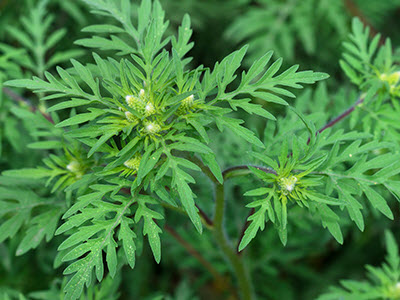
Characteristics: Beyond being the bane of allergy sufferers, ragweed plants can grow multiple branches with deeply lobed leaves.
Impact: Each ragweed plant is prolific, producing thousands of pollen grains and affecting both corn and soybean yields.
Control Measures: Herbicides with multiple modes of action can stall ragweed’s advance. Regular scouting and timely intervention are also key. The advent of soybeans resistant to dicamba or 2,4-D should help to control this weed in 2024.
#4. Annual nightshade (Solanum spp.)
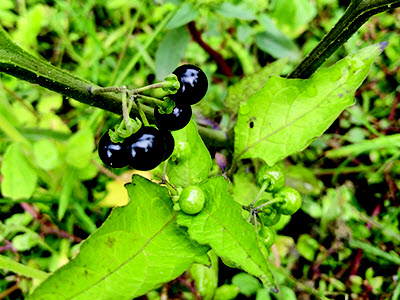
Characteristics: This weed boasts heart-shaped leaves and produces small berries that can contaminate grain shipments.
Impact: Direct competition and grain contamination are two-fold challenges posed by nightshade. Lynch warns that “if found in IP soybeans, the soybeans will probably be refused. This is because there once was a seed treatment that had the same colour as beans stained with nightshade berries. Buyers not wanting to take a chance just refused to accept beans stained with nightshade berries.”
Control Measures: Lynch says that “in IP soybeans you need an herbicide pre-emerge that has good control of nightshade. Then you have to be prepared to come back with a post emergent herbicide. In corn there are lots of options.”
#5. Volunteer corn (Zea mays)
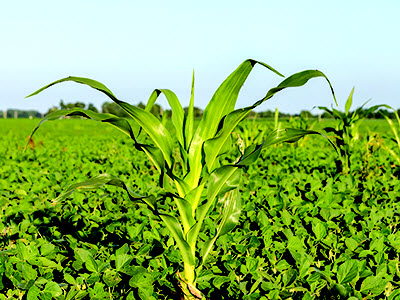
Characteristics: While corn is a staple crop, plants that grow in subsequent seasons from unharvested seeds can become weeds themselves.
Impact: A weed is a plant growing out of place. Corn in a soybean field or volunteer corn in a corn field can be trouble.
To make things worse, volunteer corn in soybeans can host corn rootworm and making crop rotation to control rootworm ineffective.
Control Measures: Selective herbicides can target volunteer corn. Choose hybrids with good standability and harvest corn before ear drop. Lynch: “If you have a lot of fallen corn ears, mouldboard ploughing buries these ears to prevent them from germination next year.”
#6. Fleabane (Conyza spp.)
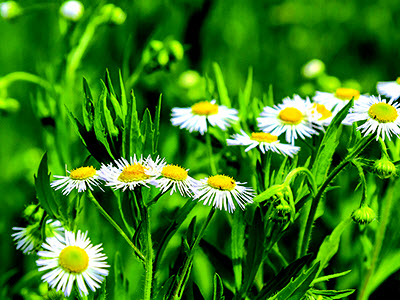
Characteristics: These are tall weeds with small flowers, often growing in clusters.
Impact: Glyphosate-resistant varieties are especially troublesome, impacting yields of both corn and soybeans.
Control Measures: Herbicides containing 2,4-D or dicamba are often recommended. There are numerous other herbicides to use. Lynch: “A quick check of OMAFRA’s program to select herbicides by crop and by weed makes controlling this weed easy. Layering residual herbicides can prevent fleabane seeds from germinating.”
#7. Chickweed (Stellaria media)
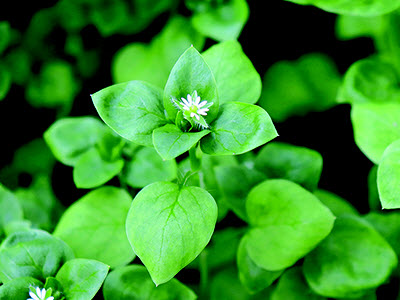
Characteristics: A low-growing weed, chickweed has small, star-shaped flowers and thrives in cooler climates.
Impact: Primarily competing in the early growth stages, chickweed can be a direct threat to wheat. As well, it is a host for soybean cyst nematodes. A good stand of chickweed in the spring is an attractive place for armyworm or cutworm adults to lay their eggs.
Control Measures: Pre-emergent herbicides, especially when combined with early mowing, can effectively control chickweed. Crop rotation with non-host crops disrupts its lifecycle.
Integrated Weed Management (IWM)
A holistic approach: Combating these threats requires a more holistic strategy than merely reaching for the herbicide sprayer. IWM emphasizes combining chemical, cultural, and mechanical methods.
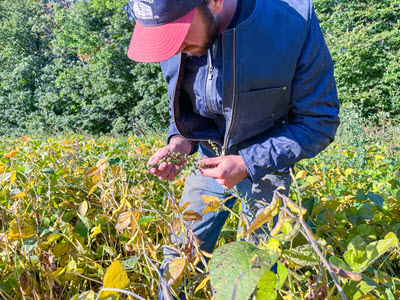
Diversification: Both in terms of crops and herbicides. Diverse rotations can reduce weed seed banks, and using a variety of herbicides can prevent resistance.
Scouting: Regular field checks can identify weed threats early, allowing timely intervention.
Mechanical Controls: Tillage, mowing, and even hand-weeding can be effective, especially when integrated with other control measures.
Conclusion
With a nuanced understanding of these annual adversaries and a strategic approach to their management, Ontario producers can confidently look forward to the 2024 growing season. The foundation lies in knowledge, timely action, and integrated strategies. BF
(Editor’s Note: Online sources were used in researching this article.)



Post new comment